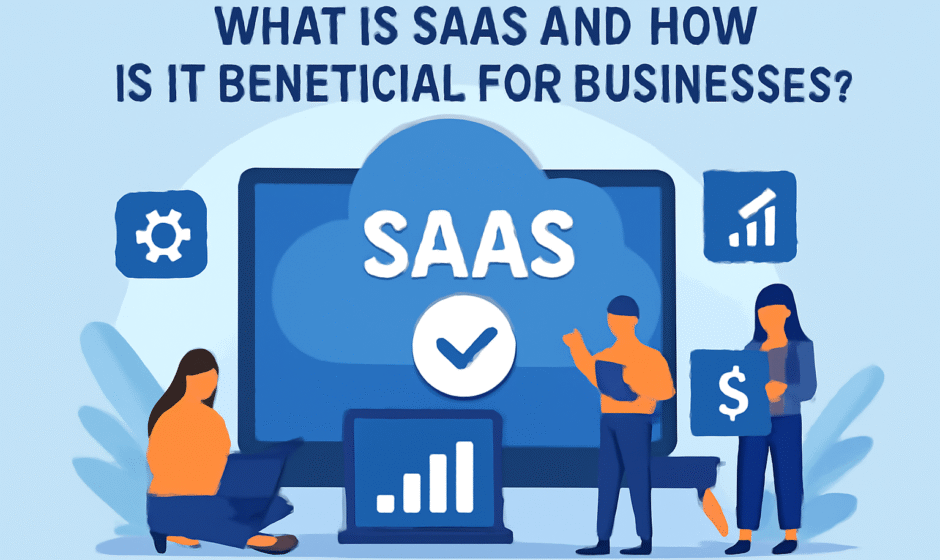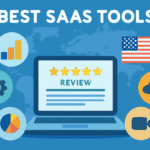In today’s digital era, technology has left its mark on every sector, especially in business. Technological solutions are helping businesses reach new heights. One such solution is SaaS (Software as a Service). SaaS is a cloud-based software distribution model where users can access the software over the internet without needing to install it on their devices.
In this article, we will explore what SaaS is and how it can prove beneficial for businesses.
What is SaaS?
SaaS, or “Software as a Service,” is a cloud-based software distribution model. In this model, software and its data are stored on servers accessed via the internet. Users can access it through a web browser without needing to install the software on their devices.
SaaS is typically provided on a subscription basis, where businesses or individual users pay a monthly or annual fee. Examples of SaaS include Google Docs, Dropbox, and Microsoft 365.
Key Features of SaaS:
- Cloud-based: SaaS is accessed through the internet, meaning no installation is required on user devices.
- Subscription model: Users pay a subscription fee either monthly or annually.
- Scalability: Users can increase or decrease software resources according to their needs.
History of SaaS
SaaS evolved in the late 1990s. Initially, software distribution involved companies providing programs via disks or other physical means, which required businesses to purchase software licenses and maintain large teams for software upkeep.
In 1999, Salesforce pioneered the SaaS model by introducing cloud-based CRM (Customer Relationship Management) software that allowed users to access and manage their data without any hardware. Since then, SaaS expanded into other software types, becoming a stable and profitable option for businesses.
Benefits of SaaS
SaaS offers several advantages for businesses. Not only does it help reduce costs, but it also makes businesses more flexible, faster, and more affordable. Let’s explore some key benefits of SaaS:
- Cost Efficiency:
The cost of SaaS software is significantly lower than traditional software. There’s no need for a large initial investment. Businesses only pay a subscription fee on a monthly or annual basis. Additionally, businesses don’t incur extra costs for software maintenance, updates, or server management. - Accessibility & Portability:
SaaS allows businesses to access their data and software from anywhere and on any device. This is particularly beneficial for businesses with remote workforces or mobile employees. - Automatic Updates:
SaaS providers regularly update and improve their software. This means users don’t need to manually update their software; they always have access to the latest features and security patches. - Scalability:
With SaaS, businesses can easily scale resources up or down as per their needs. As a business grows, it can expand its software services without needing a significant upfront investment in new software. - Security:
SaaS providers offer top-tier security. They regularly back up data, use encryption, and implement cybersecurity measures. This ensures that users don’t have to worry about the safety of their data. - Minimal IT Team Requirements:
Maintenance and server management are handled by the SaaS provider, meaning businesses don’t need to manage their IT infrastructure. This reduces the need to expand an internal IT team. - Time Efficiency:
SaaS enables businesses to complete tasks quickly and efficiently. There’s no need for lengthy installation or updates, which saves time.
How to Use SaaS?
Using SaaS is simple. It doesn’t require complex setup or installation. Just follow these steps:
- Choose the Software: Businesses need to select a SaaS service that fits their needs. Some popular SaaS tools include Salesforce, HubSpot, Google Workspace, Zoom, etc.
- Subscribe: To use the selected SaaS service, choose an appropriate subscription plan.
- Start Using: Once subscribed, you can access the software through a browser and start using it.
Examples of SaaS:
- Salesforce:
Salesforce is a popular CRM software that helps businesses build, manage, and enhance customer relationships. - Google Workspace:
Google Workspace offers SaaS services providing email, calendar, documents, and other office tools for both business and personal users. - Slack:
Slack is a team communication and collaboration platform based on the SaaS model. It allows teams to communicate and share in real time.
Conclusion
SaaS has opened up a new direction for businesses by providing an affordable, flexible, and secure way to meet their technical needs. With SaaS, businesses can complete tasks more quickly and efficiently. Therefore, if you’re a business owner, adopting SaaS could be a wise decision for your business.



